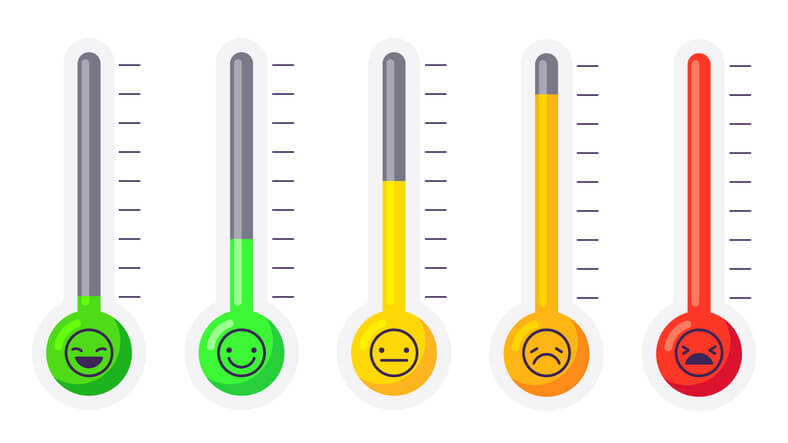
A Strategic Maintenance Checklist for Fleet Managers and EHS Officers
As summer temperatures climb, so do the risks for professional fleet vehicles. Blown tires, overheated engines, battery breakdowns—heat-related vehicle failures can cause expensive downtime, safety hazards, and missed delivery targets.
For fleet managers and environmental health and safety (EHS) officers, extreme weather isn’t just an inconvenience—it’s an operational liability. This guide delivers a proactive, SEO-optimized summer maintenance checklist explicitly designed to help fleets prevent heat-related vehicle failures and keep drivers safe, productive, and on the road.
Why Summer Heat Is a Silent Fleet Killer
High temperatures accelerate wear and tear across key vehicle systems. Unlike winter breakdowns that often provide early warning signs (e.g., sluggish starts, frozen components), heat-related issues tend to strike suddenly—often at highway speeds or remote job sites.
Key summer risk factors:
- Ambient heat affecting tire pressure, coolant systems, and air conditioning
- Urban stop-and-go traffic raises engine and transmission temperatures
- Increased idling from delivery and service vehicles with tight schedules
- Extra weight from summer cargo like equipment, building materials, or trailers
A 2022 AAA study found that vehicle breakdowns increase by 20–30% in summer months, especially in commercial vehicles with extended use cycles.
Fleet Manager’s Summer Maintenance Checklist
Preventing Heat-Related Vehicle Failures Before They Happen
Here’s a component-by-component checklist tailored for extreme summer conditions:
1. Cooling System Check
- Inspect coolant levels and top off with the correct 50/50 mix of antifreeze and distilled water.
- Pressure-test the radiator cap and cooling system for leaks.
- Flush system every 30,000–60,000 miles, especially before peak heat.
- Check fan operation, including electric fans and belts on mechanical fans.
Pro tip: Use infrared thermometers during inspections to spot hot spots that may indicate blockages.
2. Battery Load Test
- Heat is more detrimental to battery wear than cold.
- Perform a load test to check charging capability under high demand.
- Clean and inspect terminals for corrosion.
- Secure loose battery mounts that could cause internal damage.
Fleet Insight: Batteries over three years old in hot climates should be replaced preemptively before summer.
3. Tire Pressure and Tread Evaluation
- Tire blowouts spike in summer due to underinflation + heat = failure.
- Check tire pressure weekly; adjust for hot pavement conditions.
- Inspect for dry rot, bubbles, or uneven tread wear.
- Rotate tires regularly to distribute heat stress.
Bonus Tip: Don’t forget the spare tire—it’s often neglected and useless if not properly inflated.
4. Belts and Hoses Inspection
- Heat accelerates rubber degradation. Look for:
-
- Cracking
-
- Fraying
-
- Swelling near hose clamps
- Replace anything suspect—don’t wait for a roadside breakdown.
5. Fluids and Lubricants
- Check and top off:
-
- Engine oil
-
- Brake fluid
-
- Transmission fluid
-
- Power steering fluid
- Consider synthetic motor oil in high-heat zones—it resists breakdown better under stress.
- Add coolant leak detection dye to spot slow leaks in advance.
6. Air Conditioning (A/C) Systems
- A functioning A/C isn’t just a comfort issue—it’s a driver safety and retention concern.
- Check cabin filters and refrigerant levels.
- Inspect compressors and condensers for wear or leaks.
- Test under load—A/C may fail under stress even if it seems fine at idle.
7. Cab Comfort and Driver Readiness
- Ensure ventilation fans, window tinting, and shade visors are functioning.
- Provide hydration protocols—many fleet operators now mandate electrolyte supplies in each vehicle.
- Remind drivers of heat stroke signs: nausea, confusion, excessive sweating, or dizziness.
Cultural Note: Addressing heat stress isn’t just about compliance—it’s about showing drivers that their wellbeing matters.
8. Emergency Equipment Check
- Stock up on:
-
- Extra coolant and oil
-
- Jumper cables
-
- First-aid kits
-
- Flares or reflectors
-
- Sunshade or reflective windshield covers
Driver Tip: Encourage drivers to inspect their kits weekly during high-heat months.
Going Beyond the Checklist: Proactive Summer Fleet Strategies
Rotate Usage Strategically
Don’t assign the oldest or least efficient vehicles to the longest or hottest routes. Build your route planning and dispatching software to:
- Prioritize newer vehicles for high-stress deliveries
- Minimize idling time in known traffic areas
- Avoid peak heat dispatch windows when possible (2–5 p.m.)
Use Telematics for Early Warning
Heat accelerates small problems into big failures. Use telematics systems to:
- Alert on high engine temps
- Flag increased fuel usage (can indicate a failing component)
- Monitor tire pressure and driver behavior
Schedule Preventive Maintenance Seasonally
Create a “Summer Prep PM” category in your fleet management software. Assign all vehicles a mandatory inspection in April–May with follow-ups in July and August.
Tip: Attach photos, technician notes, and part replacements to each vehicle’s digital profile to track recurring heat-related issues over time.
Summer Failures Aren’t Just Technical—They’re Financial
Let’s break down the numbers:
Component Failure Impact Estimated Cost
Blown Tire Tow + tire + labor = $400–$1,200
Overheated Engine Lost revenue + repairs = $3,000–$7,000
A/C System Failure Driver complaints + downtime = $500–$2,500
Battery Breakdown Roadside assistance + missed delivery = $200–$600
A simple checklist like this one can potentially save tens of thousands of dollars per season—and more importantly, help you avoid preventable crashes, compliance issues, or injury.
Final Thoughts: Heat-Proof Your Fleet and Protect Your People
Summer doesn’t have to be a breakdown season. With a proactive, fleet-wide approach to preventing heat-related vehicle failures, you can keep your operations cool—even when the temperature isn’t.
Remember: the best maintenance is preventive, and the best investment you can make is in safety.
Quick Recap: Summer Maintenance Musts
- Check coolant, belts, hoses, and batteries before every long route
- Monitor A/C performance and provide heat protection for drivers
- Rotate usage based on route stress and temperature
- Use telematics for early warnings
- Make emergency kits standard
- Train drivers on heat symptoms and self-care







